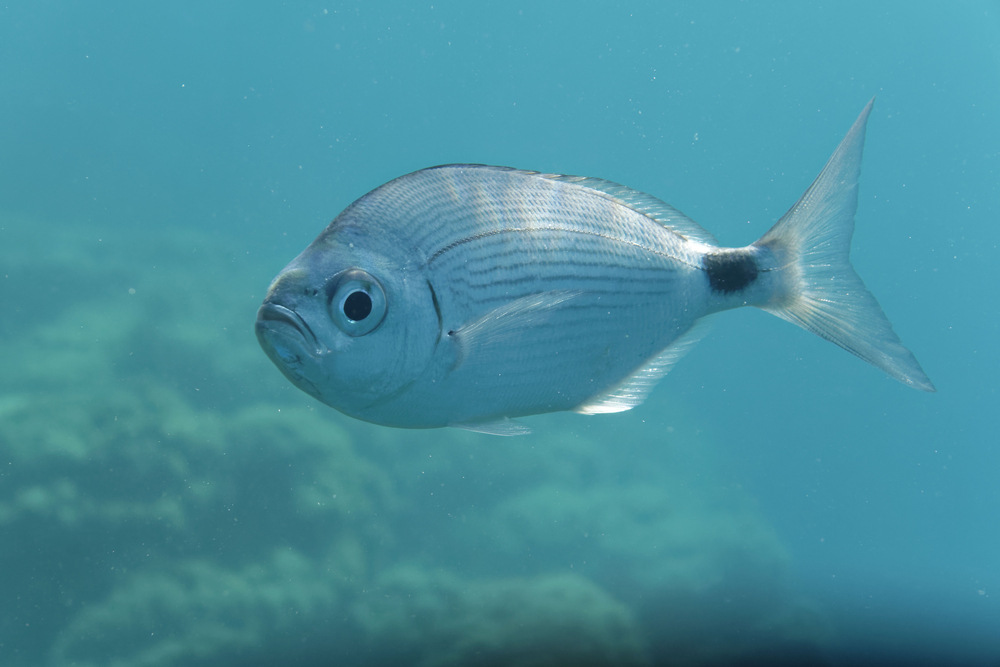If you’ve ever taken a dip in the beautiful blue waters of the Mediterranean Sea, you may have wondered what’s lurking beneath the surface. This famous body of water is considered a biodiversity hot spot, with over 500 native fish species and thousands of other critters like dolphins, sharks, and crustaceans swimming beneath the surface.
The Mediterranean Sea stretches from southwest Europe to North Africa and western Asia and is almost completely enclosed by land. The gentle currents and warm temperatures make the Mediterranean an ideal place for fish to thrive, and whether you’re hoping to dive or dine on these intriguing species, you’ll have plenty of opportunities to do both while visiting this stunning region.
That being said, climate change and overfishing have devastated certain populations of Mediterranean Sea fish over the last few decades, and certain species that were once thriving have now been placed on endangered species lists. This has made way for other species to flourish – so read on to discover the 30 most common Mediterranean Sea Fish of today.
Table of Contents
1. Atlantic Bonito
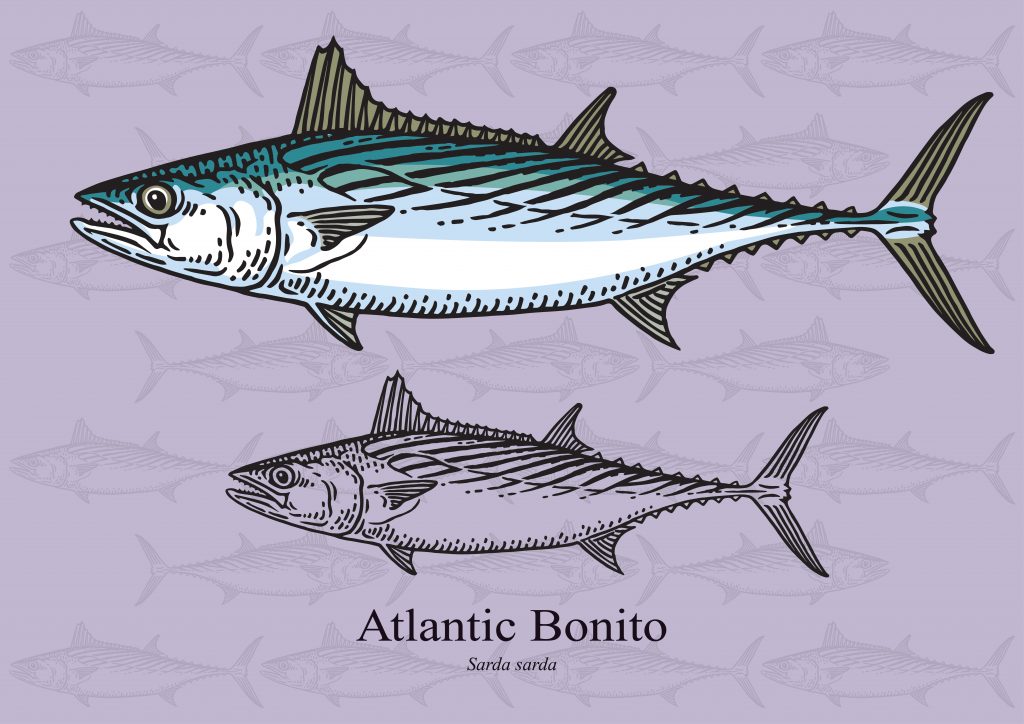
Don’t let the name fool you! The Atlantic Bonito is actually native to the Mediterranean Sea, though they can also be found in the Atlantic Ocean and the Black Sea. The dark stripes, blue body, and prominent sail-fin make this species easy to spot, though you might be more likely to encounter it on your plate than on a reef dive.
The Atlantic Bonito is a fatty fish, similar to mackerel and tuna, and is common in Mediterranean dishes. You can bake, grill, or pickle it, all without a guilty conscience – as these strong swimmers have large populations and have yet to be overfished.
2. European Anchovy
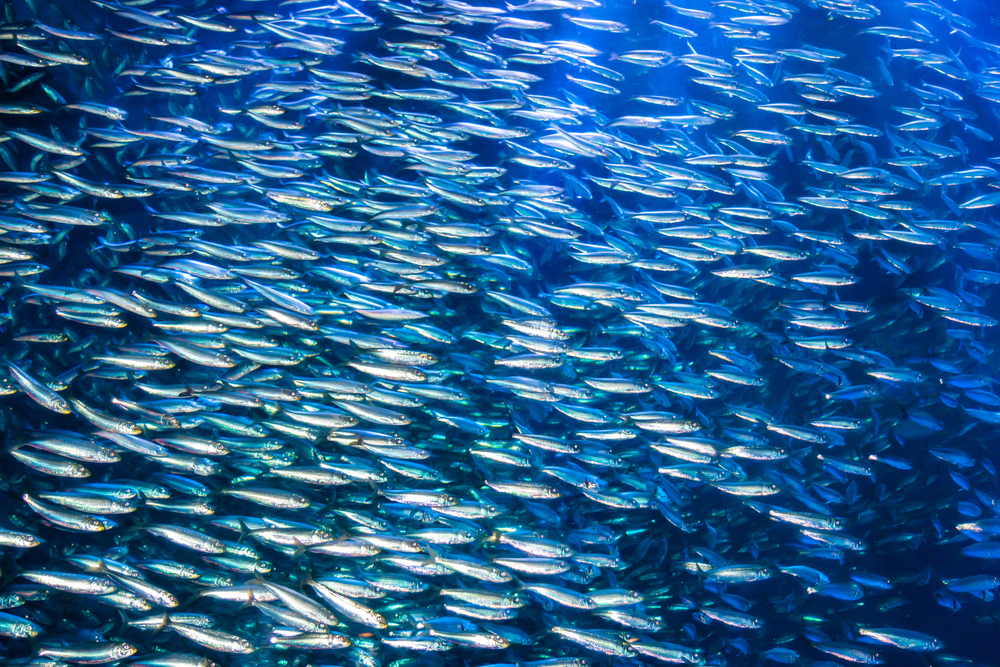
Another one of the most common fishes in the Mediterranean is the European Anchovy. These tiny swimmers pack a salty punch, making them a favorite of foodies from around the world. Hidden in many different dishes from Worchestire sauce to kimchi, anchovies have been used since ancient times and continue to be a staple to this day.
If you’re spending time in the Mediterranean Region, you’ll likely find anchovies fried up and served in delis and local bars, and tasting at least one is basically a rite of passage while you’re here.
These small blue and green fish are also used as bait for some of the larger Mediterranean fish like tuna and sea bass.
3. Picarel
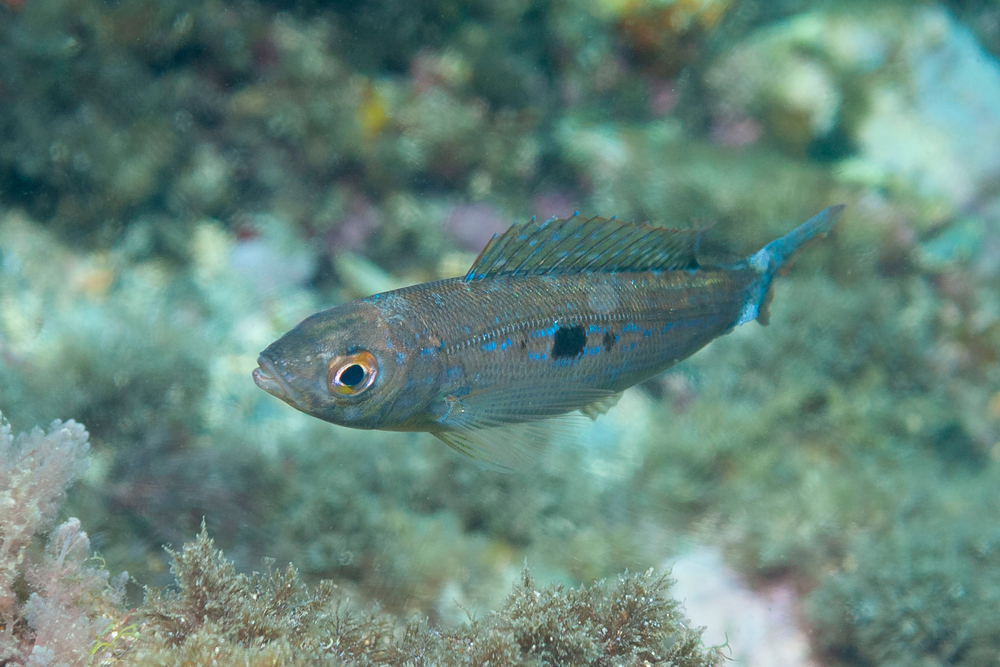
Also known as whitebait, picarel is another common Mediterranean Sea fish, though you’ll also find them in the Atlantic Ocean and the Black Sea. They mostly inhabit shoals with lots of seagrass and sandy sea beds, though you are more likely to see these on restaurant menus than while diving or snorkeling.
Similar to the European Anchovy, the picarel is a small fish that is often served fried – though you’ll likely find these coated in a thin layer of flour and paired with a lemon wedge.
This delicacy is especially popular in Cyprus, Italy, Croatia, and Greece, and chowing down on the whole fish (including the eyes) is often accompanied by a glass of the local aperitif.
4. Sardines
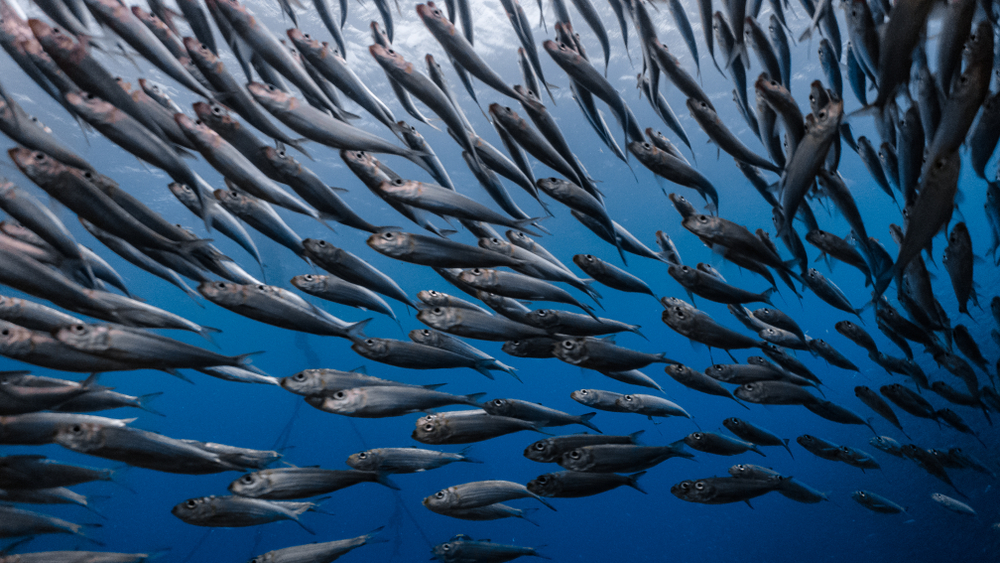
Completing the trifecta of small (and tasty) Mediterranean Sea fish, Sardines are another common menu item across the region. Often referred to as “the poor man’s fish” for its low price point in comparison to some of the other species that swim in these waters, sardines have been served up for centuries, resulting in a large variety of dishes.
Just like picarel and anchovies, you can eat sardines fried – but you can also grill them, throw them in the oven with some tomatoes, or eat them raw after they’ve been cured with salt.
While you’ll find sardines at virtually any taverna in the Mediterranean, if you’re looking for the best place to try them, head to the Greek island of Lesvos – where the local sardines are famed for their superior taste.
5. Mediterranean Sea Bass

The Mediterranean Sea Bass is one of the most common Mediterranean Sea fish, largely because of extensive farming. This is due to the fact that the countries surrounding the Mediterranean have a taste for this fish, so you’ll see it on menus everywhere.
Of course, you’ll still find this fish in the wild – but if you plan on eating a wild-caught Mediterranean Sea Bass, it’ll cost you a pretty penny.
Locals claim that it is worth the indulgence, and if you do see it on a menu, be sure to order it the traditional way – grilled whole and served with lemon, olive oil, garlic, and oregano.
6. Flying Fish
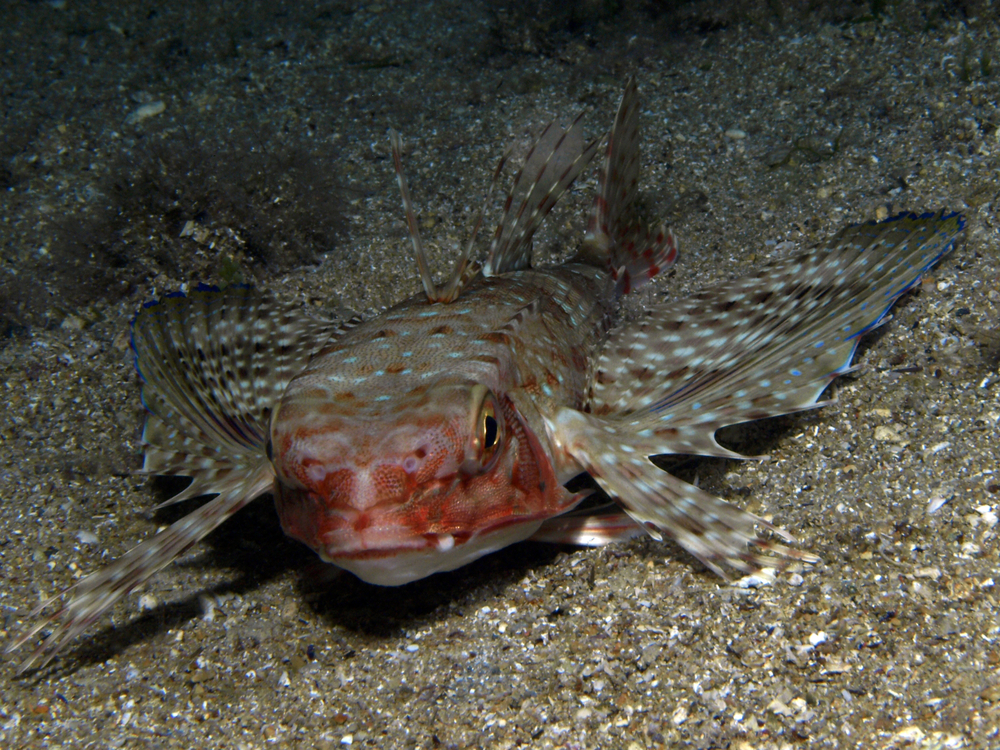
One of the most intriguing fish that is common in the Mediterranean is the flying fish. These unique creatures spend time both above and below the water, and their birdlike behavior is quite a sight to see.
Also known as Cheilopogon Heterurus, the flying fish have two pairs of elongated fins that help them catch the air and soar above the water. These fish can self propel themselves out of the water and “fly” for up to 45 seconds at a time and cover distances of up to 400 meters (or 1,312 feet).
This impressive evolution is thought to be used for escaping predators like mackerel, marlin, swordfish, and tuna, but it has also kept them off the plates of humans in the Mediterranean. This can’t be said for everywhere around the world, however, as flying fish is somewhat of a delicacy in Barbados, Japan, Vietnam, and China, amongst others.
7. Red Porgy
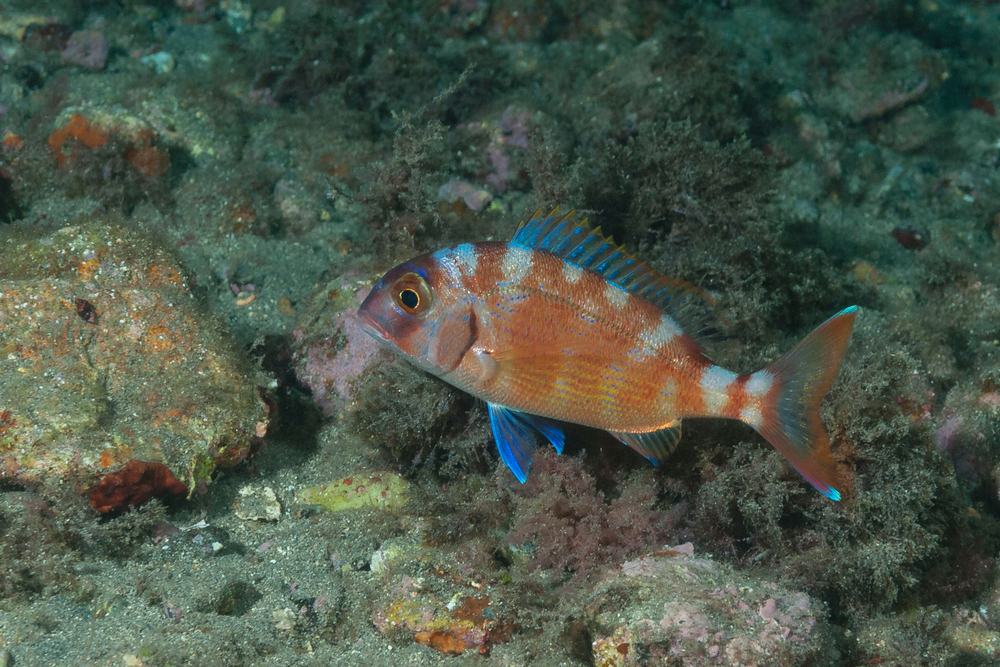
Red porgy is another one of the most common Mediterranean Sea fish, and its silvery rose color also makes it one of the prettiest. Sometimes referred to as common sea bream, red porgy is one of the most prized catches at fish markets across the Mediterranean. It’s also one of the most expensive, though you can often find farm-raised red porgy at a much lower price point than those that are wild-caught.
Common sea bream are some of the tastiest fish in the Mediterranean, and you’ll likely find it on menus around the region either grilled up or in a fish soup.
8. Red Mullet
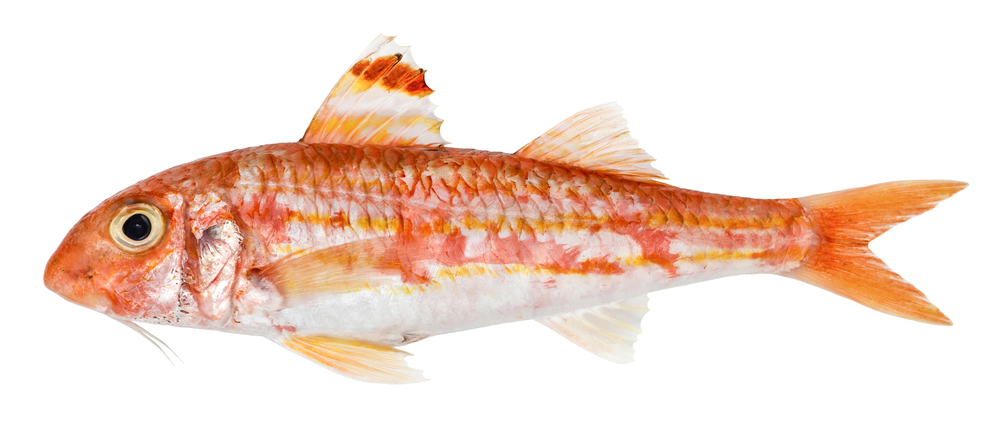
Similar to many other species on our list, the red mullet is native to the Mediterranean Sea, the Black Sea, and the Atlantic Ocean. This is one of just two species of goatfish and actually isn’t related to other “mullet” species.
The distinct pink color and striped dorsal fin make the red mullet easy to identify, and in ancient times these small fish were one of the most valuable and famous fish in the sea. While today they are slightly more common, they are still a delicacy around the Mediterranean region, and locals love them for their mild and sweet flavor.
9. Flathead Grey Mullet
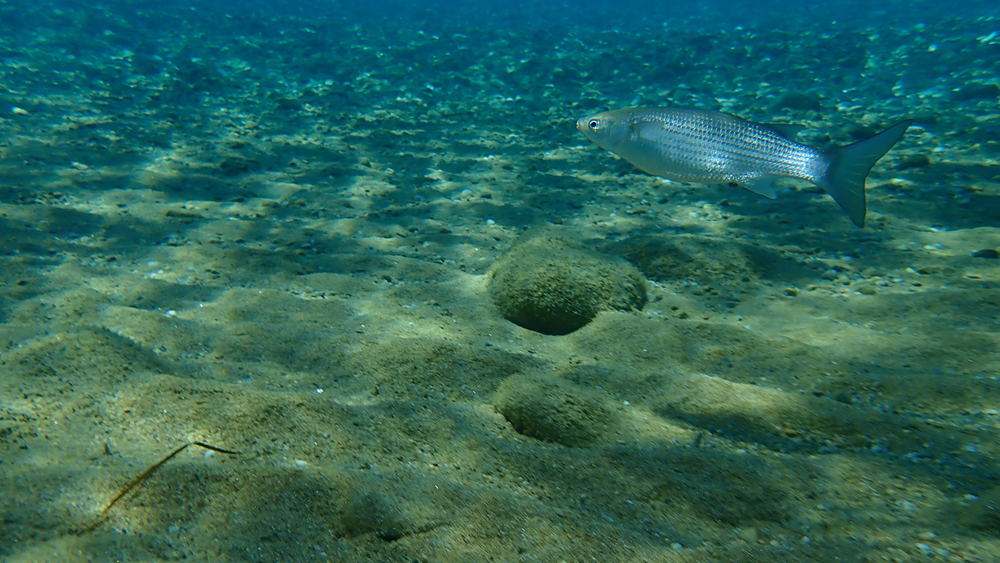
Distinguishable by its greyish brown coloring and elongated body, the Flathead Grey Mullet is one of the most common Mediterranean Sea fish. These versatile fish can live in a wide range of salinity levels, allowing them to travel between river beds, estuaries, and coastal waters without a problem.
These cautious creatures travel together in schools for safety and usually make their way to lagoons when it comes time to reproduce.
While you will find flathead grey mullet on the menu in some places within the Mediterranean, it’s more common to consume the roe (fish eggs) from the females. If you do see mullet on the menu, it’ll likely be fried or baked with roasted vegetables.
10. European Hake
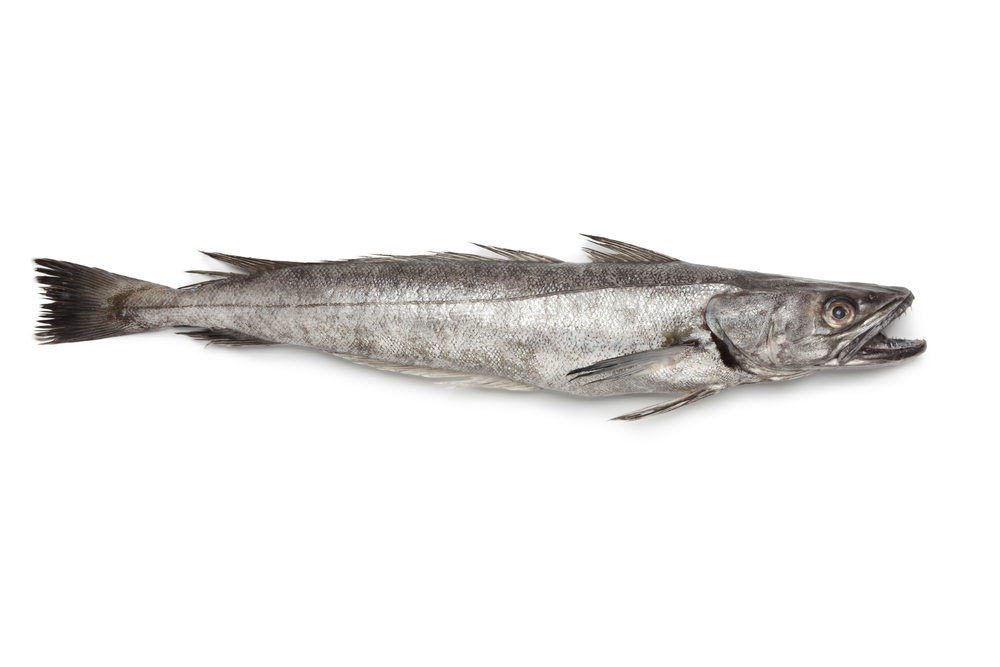
While certainly not the most beautiful, the European hake (often referred to simply as hake) is one of the most common Mediterranean Sea fish. This foreboding creature boasts a mouthful of sharp teeth, a long body, a big head, and silvery scales. European hake is a carnivorous fish, with the Atlantic herring being its prey of choice.
The hake is not at the top of the food chain, however, and these intimidating fish are often netted by humans who seek them out for their soft and tasty flesh. You’ll likely see hake on menus and in fish markets across the Mediterranean, so don’t hesitate to try this delectable fish while you’re in the area.
11. Common Dentex
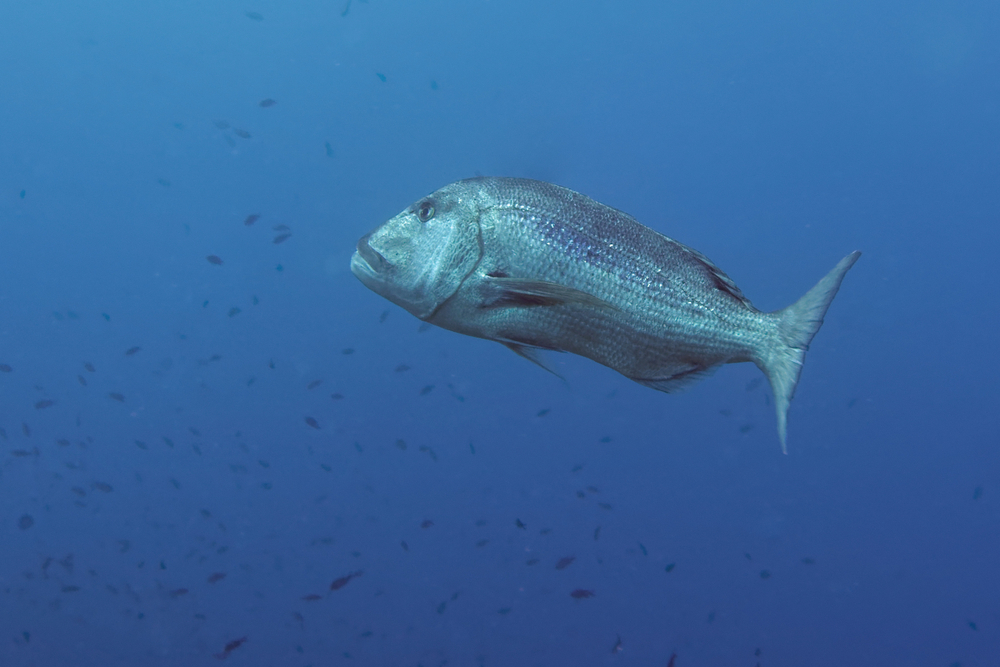
Often referred to as “the Queen of the Sea” by Greek fishermen, the common dentex is one of the most common Mediterranean Sea fish. Similar to the European hake, the common dentex is a carnivorous species that gets its sustenance from other fish, and although lean and large in appearance, they are much less intimidating than the hake.
Due to its high price point, the common dentex is a true delicacy in Mediterranean cuisine – and you’ll have to pay a high price if you’re hoping to get your hands on one of these large fish. They’re also harder to find on restaurant menus than some of the other fish on our list.
12. Saddled Sea Bream

Easy to spot by its flat grey shape and the black spot between its body and tail, the saddled sea bream is one of the most common types of fish in the Mediterranean Sea. Mostly found in the easternmost parts of the Mediterranean, the sea bream gets its sustenance from both plants and small invertebrates.
This is one species that you’ll likely see while snorkeling, though you may also see it on a menu during your time in the Mediterranean. Saddled sea bream is usually used for soups or grilled over charcoal, and of course, served with lemon and olive oil.
13. Common Pandora
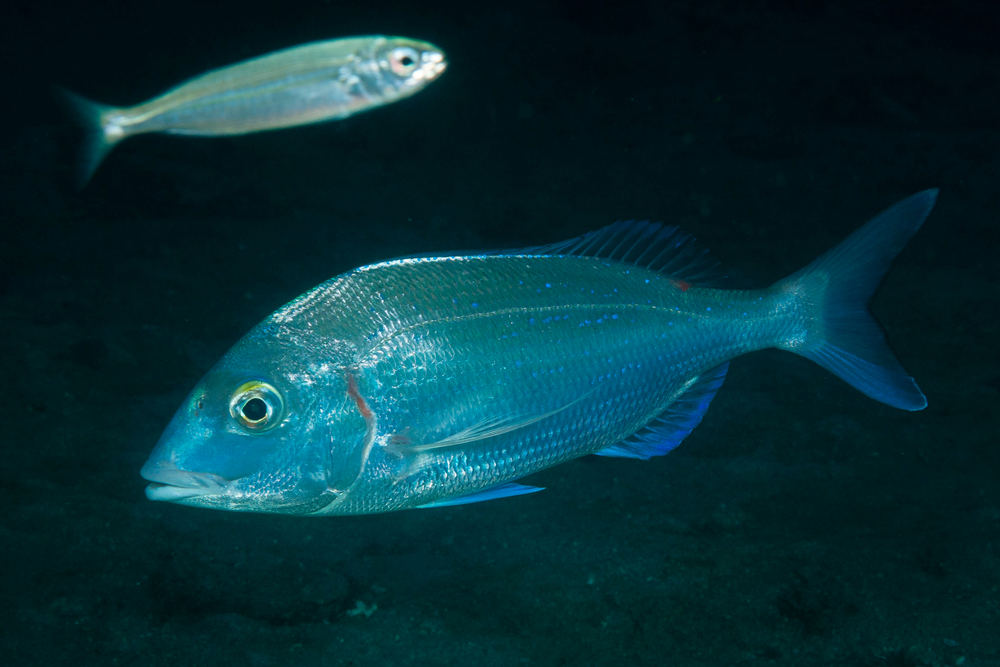
Another type of sea bream that is common in the Mediterranean Sea is the common pandora. This species is distinguishable by its silvery pink hue and a slim, oval body. It can be found all over the Atlantic Ocean and the North Sea in addition to the Mediterranean.
The cuisine in the Mediterranean celebrates this delicate white fish, and you’ll find it cooked in a variety of ways while in this region. It may not be the most popular menu item compared to some of the other fish on our list, but you’ll find it in stews and fried up as fresh catches of the day.
14. Ocean Sunfish
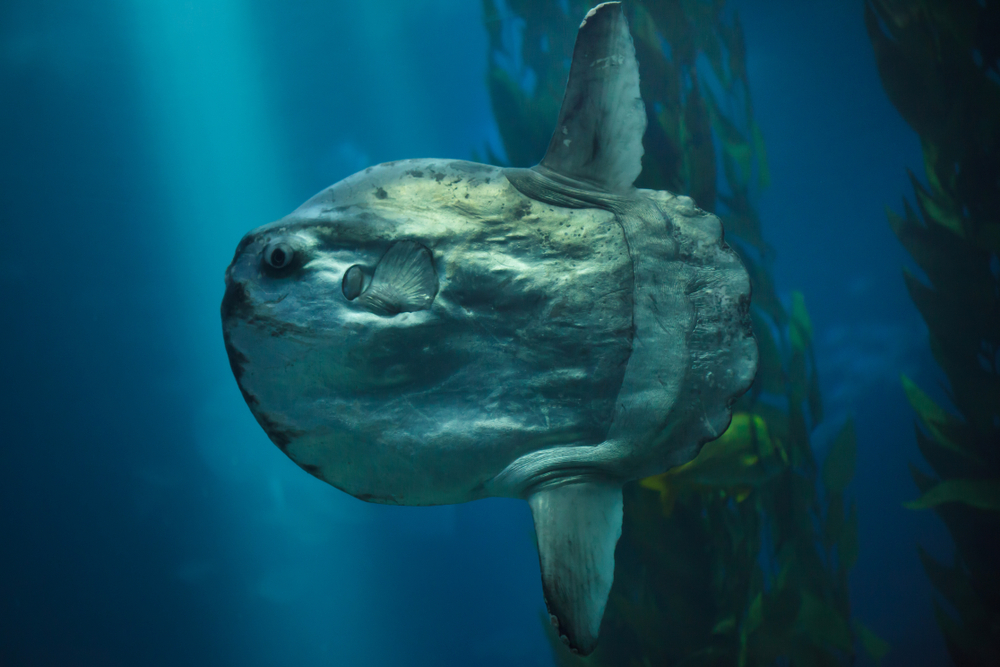
While the Ocean Sunfish is one of the most common Mediterranean Sea fish, it is also one of the most unique. Its quirky appearance is one unlike any other, and the ocean sunfish is also one of the largest fish to swim in this sea. The average ocean sunfish tops 2,000 pounds, and the biggest one ever recorded weighed over 2.7 tons!
Not surprisingly, reeling in this massive species is no easy feat, and you’re much more likely to see them swimming along the sunny surface of the sea than on your dinner plate.
Ocean sunfish are sometimes mistaken for sharks in part due to their large bodies and similarly shaped fins, but if you do see one of these odd creatures soaking up some sun nearby, there’s no need to fear; they’re completely harmless!
15. Parrot Fish
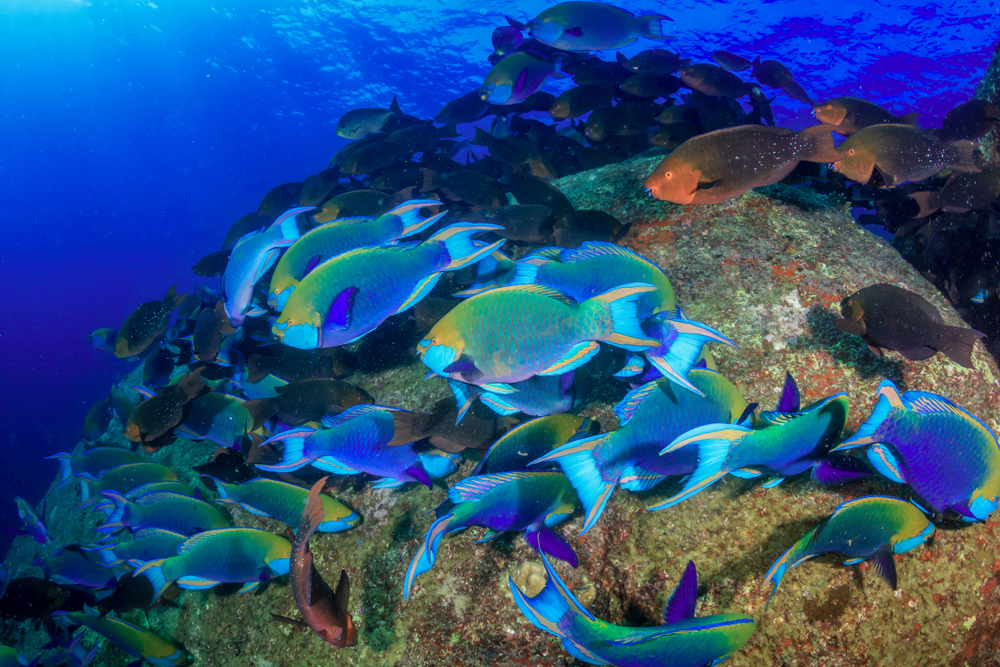
One of the most beautiful fish to swim in the Mediterranean Sea is the parrot fish, and it’s also one of the most common. The parrot fish is aptly named, and the vibrant red, yellow, and blue coloring of the females do in fact match the hues of the bird for which it was named. The male parrot fish are only slightly less flashy, with grey bodies and pink fins.
This flamboyant species mostly sticks to the southern Mediterranean Sea but it can also be found in the Atlantic Ocean. If you’re lucky, you might see some parrotfish if you go diving or snorkeling, but you may also find them on menus across the region (usually served whole and accompanied with vegetables).
16. Red Scorpionfish
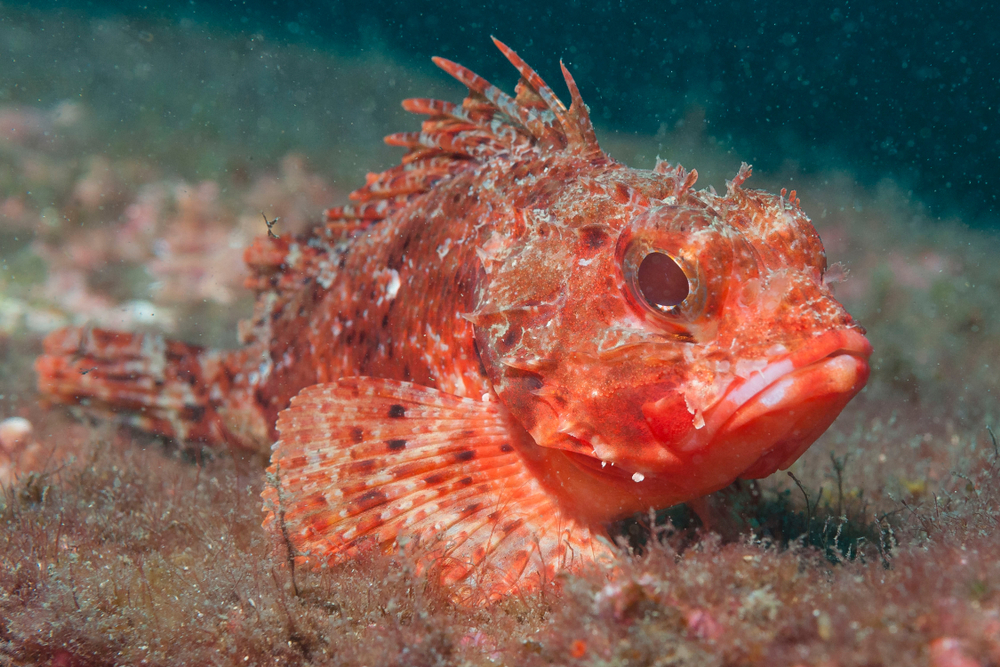
Sometimes referred to as rockfish due to their preferred habitat, the red scorpionfish is one of the most common Mediterranean Sea fish. This unique-looking species has a pug-like face, a lumpy body, and a beautiful red and white coloring. One of its most important features, however, is its venomous dorsal spines – so stay far away if you encounter a red scorpionfish under the sea.
If you happen to encounter one on your dinner plate, you won’t need to fear – and these intimidating fish are actually quite a rare delicacy in Mediterranean cuisine. It’s at its tastiest when slow-cooked, but you may also find the red scorpionfish charcoal grilled on some menus.
17. Rainbow Wrasse

The rainbow wrasse is one of the most common Mediterranean Sea fish, and it’s also one of the only on our list that manages to stay off of menus at local tavernas across the region. This may be because of their small size or due to their tendency to bury themselves in the sand when they sense a predator nearby – but whatever the reason, you’ll have to head underwater to spot one of these beautiful fishes.
As you may have guessed from the name, the rainbow wrasse is a colorful species. The silver body is accented with brilliant hues of red and green, and you’ll likely see the rainbow wrasse swimming around underwater caves and reefs. They usually travel in small groups, making it an even more impressive sight if you happen to come across this colorful species.
18. Painted Comber
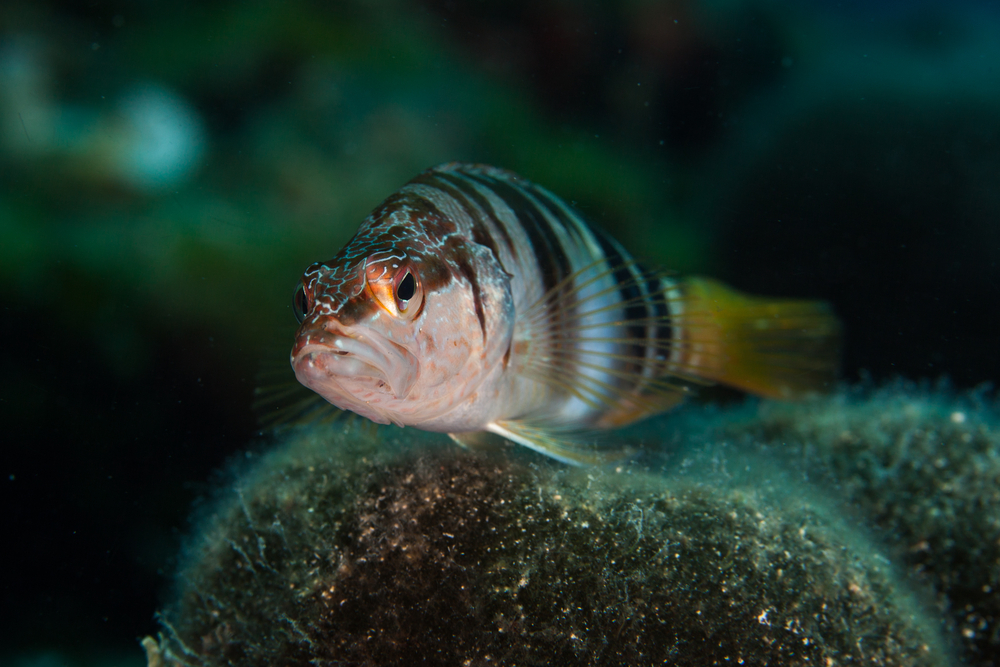
Another common Mediterranean Sea fish species that has mostly managed to stay off of local menus is the painted comber. Named for its dark vertical stripes that resemble a comb and the beautiful accents of blue, orange, red, and pink, the painted comber can usually be spotted around dusk when it comes out to hunt for food.
The rest of the day this beautiful fish spends its time hiding in rocky outcrops or laying in grassy seabeds. A fun fact about the painted comber is that it is a hermaphrodite, meaning that it has both male and female parts and is capable of self-fertilization.
19. Mackerel
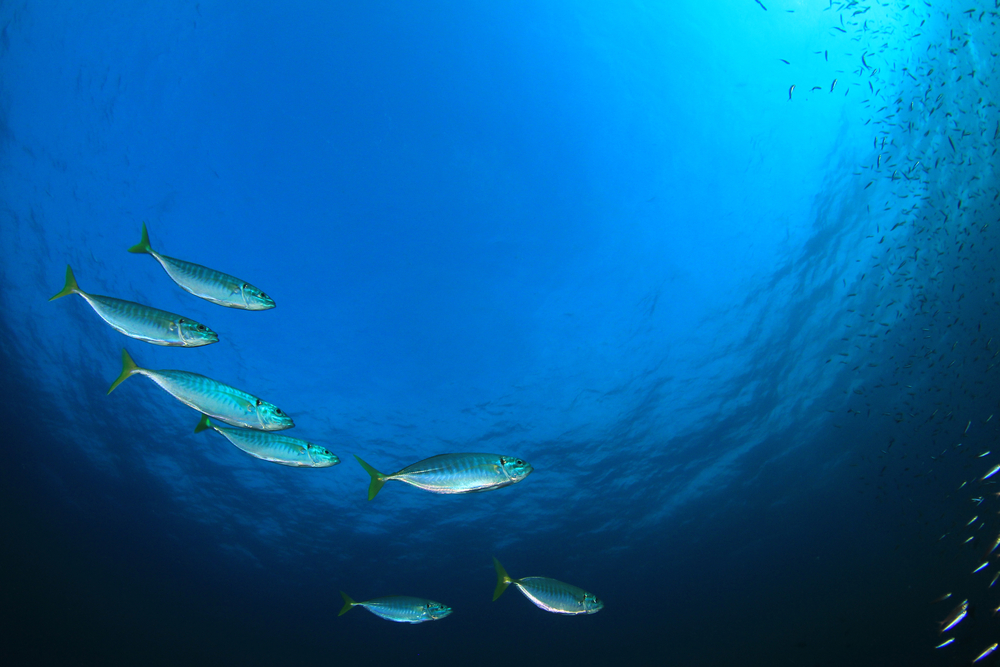
Unlike the rainbow wrasse and painted comber, the mackerel (sometimes referred to as “Atlantic chub mackerel”) is no stranger to dinner plates across the Mediterranea -, and this is one of the most common species under the sea.
Mackerel can also be found in the Atlantic Ocean and the Black Sea and are popular amongst foodies and health-conscious consumers alike. Mackerel is rich in omega-3 fatty acids, which our bodies need to survive but cannot make on their own.
Aside from being healthy, mackerel is also delicious. There’s no bad way to serve up this oily fish, but baking it in the oven is the most popular method. You could also fry up the filet, cure it, or salt it.
20. Monkfish

If you’ve ever been to a Mediterranean fish market, you’ve likely seen the ugly mug of a monkfish sticking out among other fresh catches of the day. The monkfish is one of the most common Mediterranean Sea fish, and while it certainly isn’t very pleasing to look at, it is a popular staple in regional cuisine.
Known for its large flat body, big mouth with sharp teeth, and ability to camouflage on sea floors, the monkfish is an intimidating predator. They are sometimes referred to as angler fish due to their spine, which is modified to act as a lure for nearby prey.
Each part of the monkfish has its own purpose when it comes to dining; the head is stewed in fish soups, the tail is served up fried, and the body cavity is baked, with herbs and tomatoes.
21. White Grouper
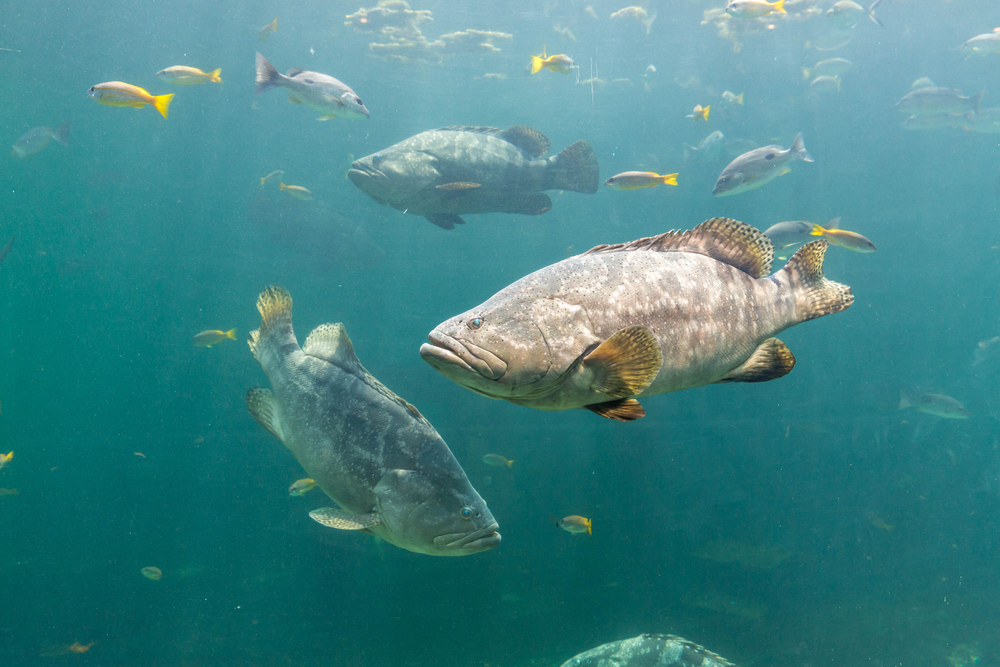
Native to the subtropical climate of the eastern Atlantic Ocean and the southern Mediterranean Sea, the white grouper is a unique species and one of the most expensive to consume in the entire area. It isn’t as common as some of the other species on our list (which is why the price point is a bit higher), but it still isn’t on the list of threatened fish in the Mediterranean – so you can consume it with a clear conscience if you’d like.
If you do taste this meaty fish while in the region, the best way to do so is grilled and paired with a dry white wine, though you might also find it floating around in fish soups.
22. Blue Spotted Cornetfish
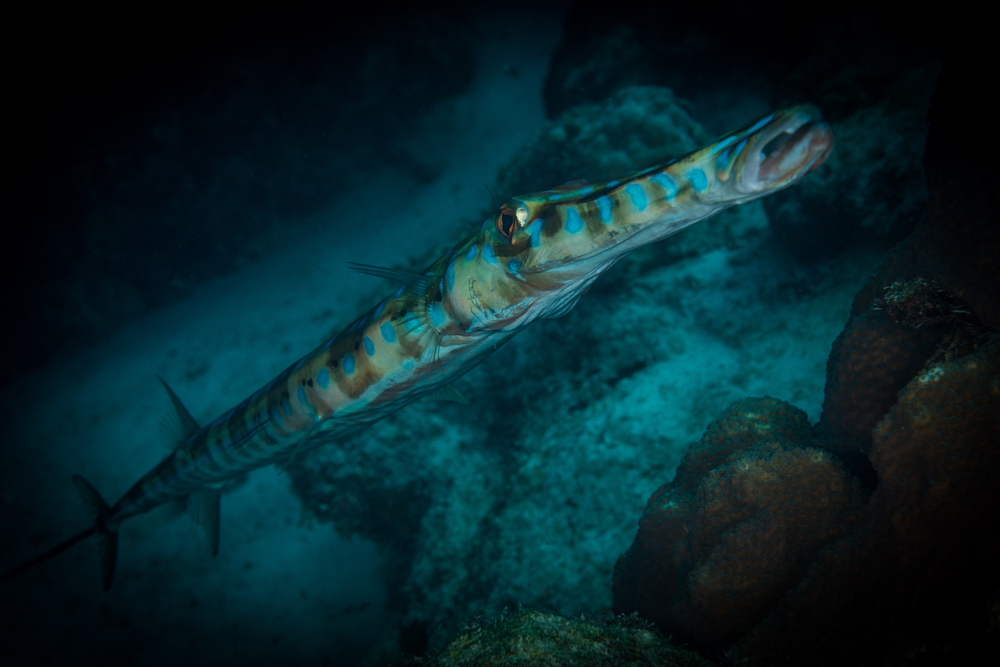
The slender and eel-like blue-spotted cornetfish is one of the most common species in the Mediterranean but is actually not native to the region. Making its way to the Mediterranean from the Red Sea via the Suez Canal, the blue-spotted cornetfish is an invasive species that now flourish across the region.
Luckily, this long snake-like fish doesn’t cause too much damage to the native flora and fauna of the Mediterranean – but it also isn’t of much importance to the local cuisine, either. For that reason, the blue-spotted cornetfish is mostly used for fishmeal when caught, and some even find that it makes a great live addition to their aquarium.
23. European Conger
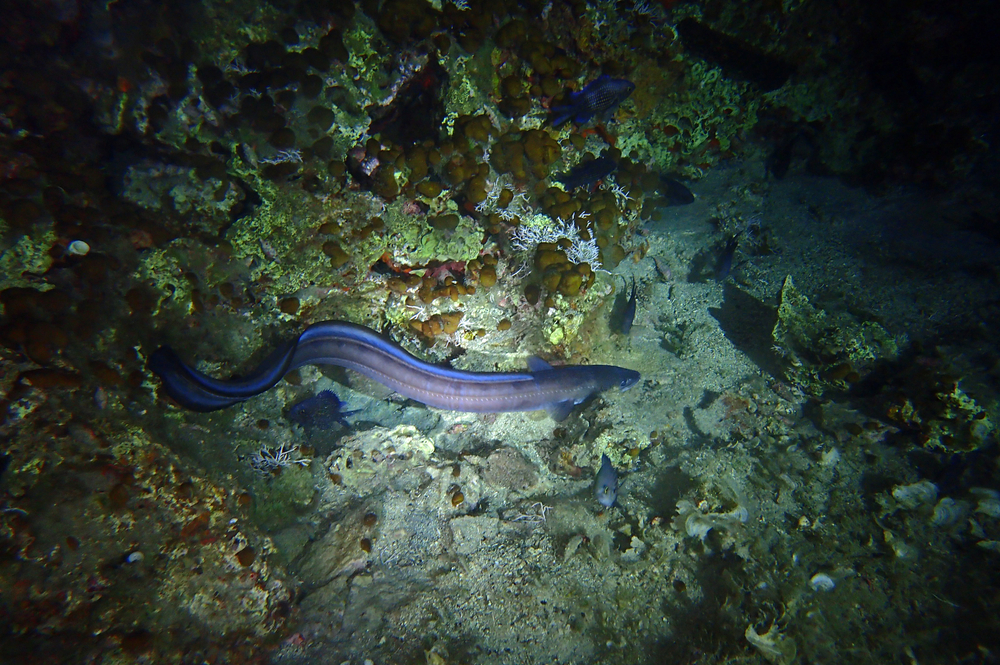
Similar in shape to the blue-spotted cornetfish, the European conger is a true eel – and is the heaviest one in the world. The European conger is a common species in the Mediterranean, and unlike the blue-spotted cornetfish, it is native to these waters.
These massive fish can reach up to 7 feet in length, and the largest ones can weigh up to nearly 160 pounds. The eels’ long bodies are black with white bellies, and they spend most of their time in “eel pits” (holes in rocky outcrops), only coming out at night to seek sustenance.
If you do spot a European conger while diving around the reefs of the Mediterranean, proceed with caution; some of the larger specimens have been known to be aggressive towards humans
24. Gilthead Sea Bream

One of the most common Mediterranean Sea fish species is the gilthead sea bream. The gilthead Sea bream is a highly adaptive fish that can handle large variations in salinity, so you’ll also find this silvery specimen in river estuaries.
It can be caught wild but is also extensively farmed – so much so that large quantities are actually exported from the Mediterranean.
Much of it is eaten in this region as well, however, especially in Greece and Italy. The most common way to serve gilthead sea bream is charcoal-grilled or oven-baked, especially around dinner time or for special occasions.
25. Flying Gurnard
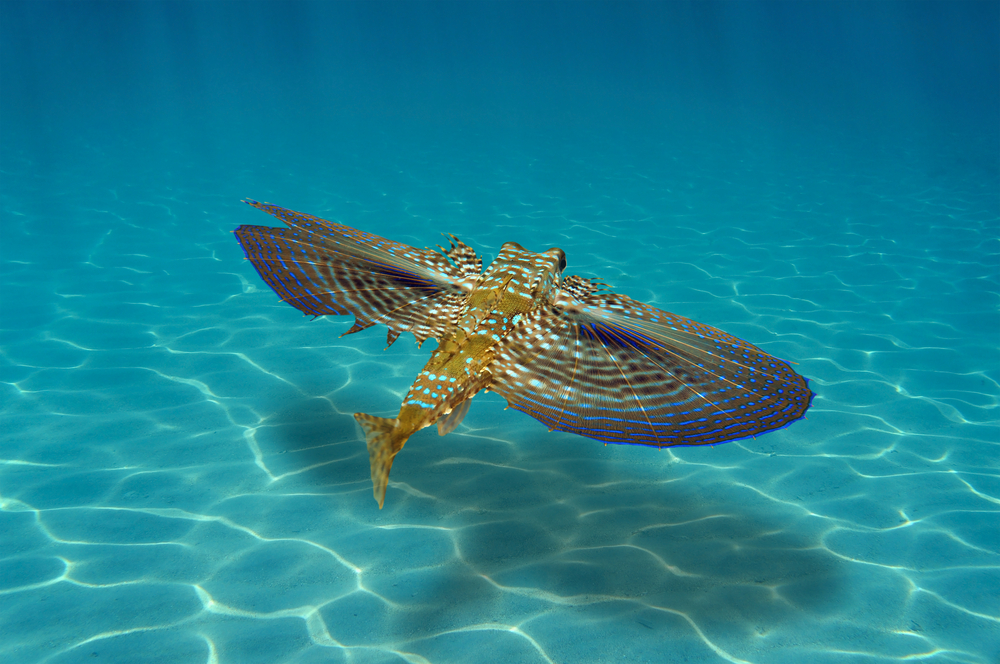
One of the most unique fish to swim in the Mediterranean is the flying gurnard, and it’s actually one of the most common as well. Sometimes referred to as “the helmet gurnard”, this flashy fish puts on a show whenever it spreads its semi-transparent wings (er, fins), which it usually does when it’s excited.
The flying gurnard loves warm and tropical waters and can be found across the Atlantic Ocean and the Mediterranean Sea. You won’t find this show-stopping species on any menus, but if you happen to spot one while you’re out for a dive or a snorkeling session, consider yourself lucky.
26. Atlantic Spotted Flounder
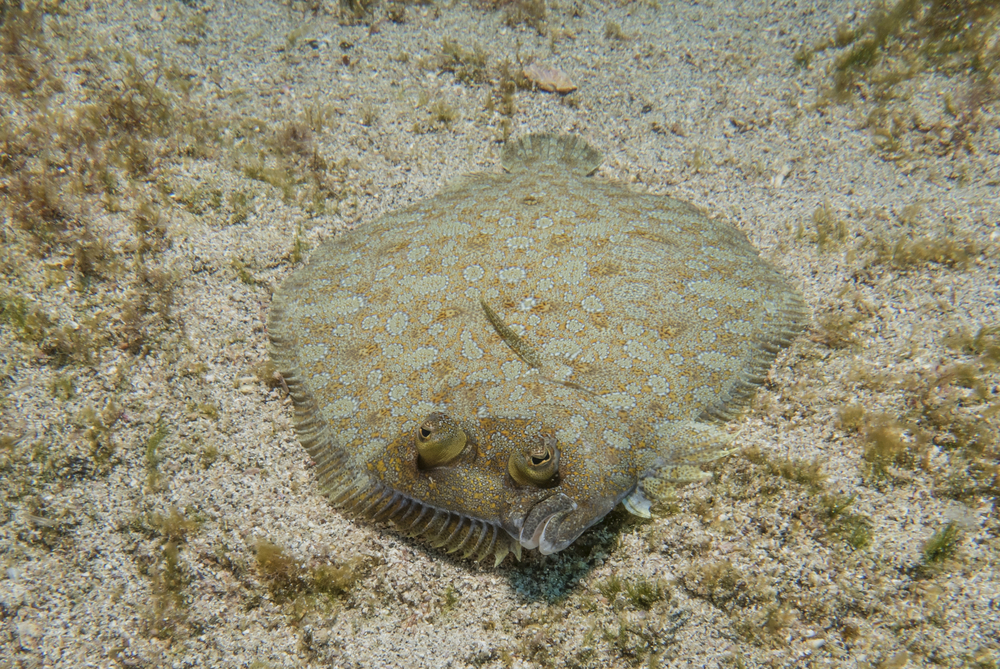
The flat and bony Atlantic spotted flounder is one of the most common species of fish in the Mediterranean, and this is partly because it is not of great importance to either the local commercial fishing industry or the foodies that inhabit this area.
As the name suggests, this flounder is native to the eastern Atlantic, but it is also native to the Mediterranean and it’s here that they are the most plentiful. This carnivorous fish feeds on smaller species, but is also preyed upon by some of the larger predators of the Mediterranean in turn – just part of the cycle of life!
27. Leerfish
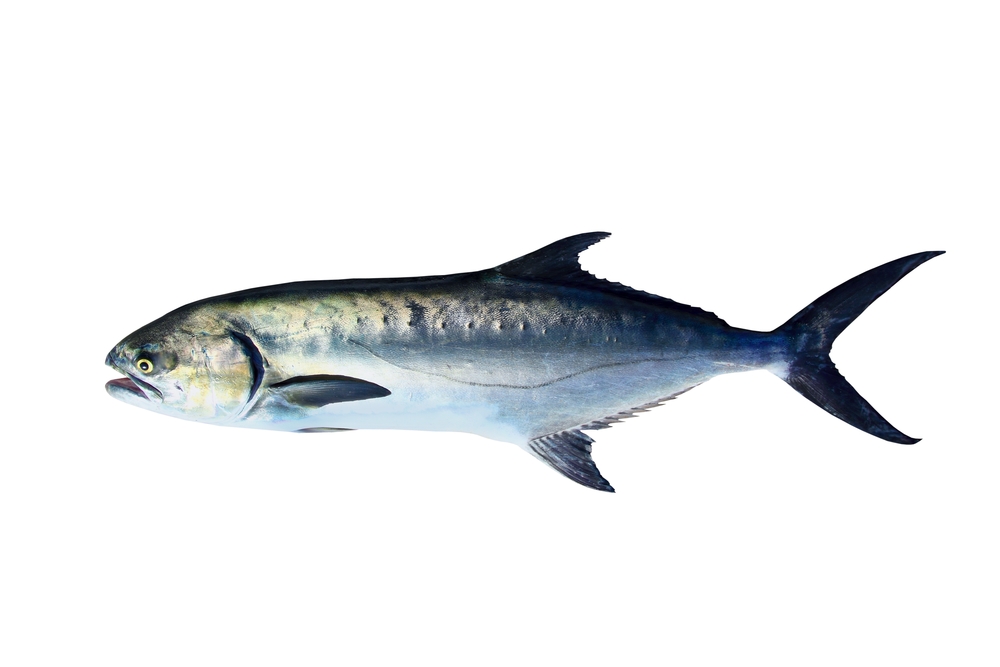
One of the largest fish common to the Mediterranean Sea is the leerfish. These massive predators can reach up to nearly 70lbs and five feet in length and are extremely fast, aggressive, and strong.
While you likely won’t see the leerfish on dinner menus, it is a popular catch for sport anglers looking for a challenge.
You’d be lucky to reel one of these bad boys in during your time in the Mediterranean – though if you’re spending time in the water, you may want to steer clear of them, as they’ve been known to attack divers.
28. Dusky Grouper
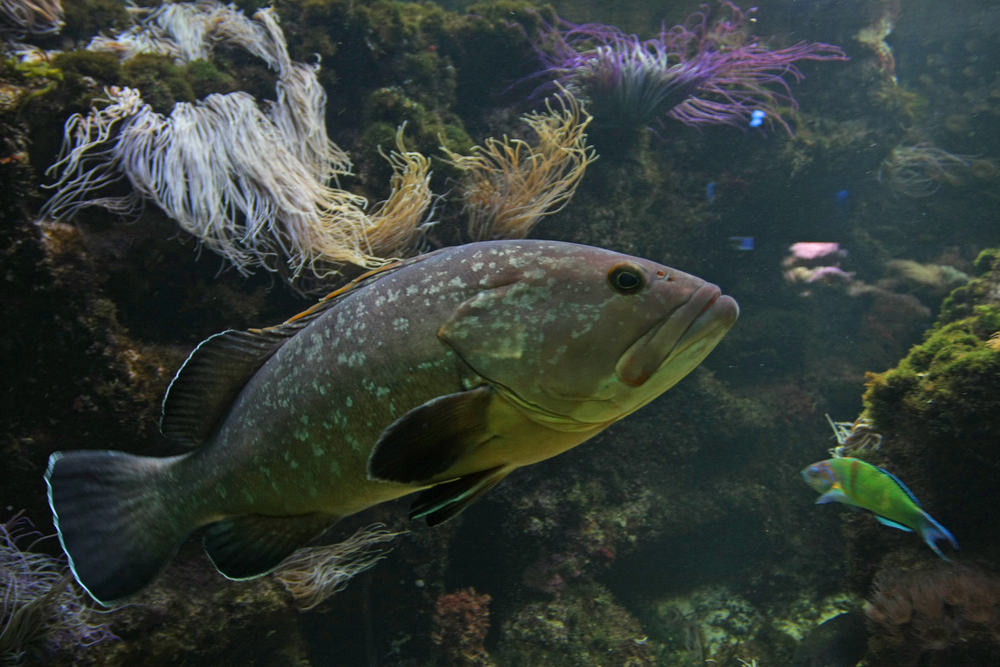
Closely related to the white grouper, the dusky grouper is another one of the most common Mediterranean Sea fish. Unfortunately, due to overfishing of the large males, their numbers have been dwindling – and the dusky grouper has been added to the list of vulnerable species.
For this reason, it is recommended not to consume this type of fish, though you may be able to see one if you plan on going diving while in the Mediterranean.
The dusky grouper is both territorial and a bit of an introvert, and you can usually spot them protecting their own section of the coral reef while they hunt for mollusks, crustaceans, octopi, and fish.
29. Mediterranean Swordfish
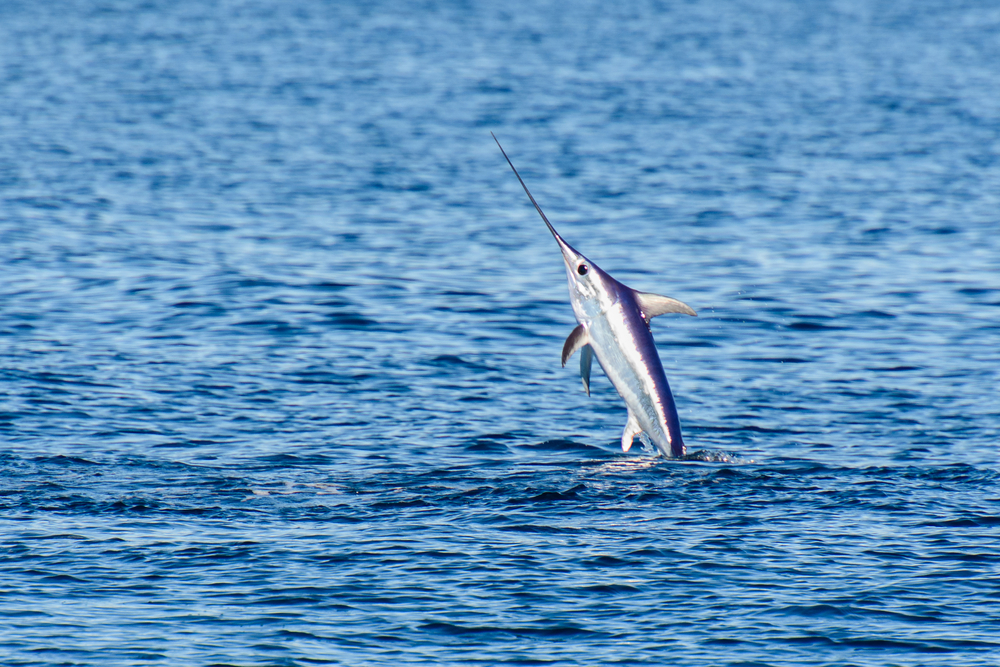
Another popular catch amongst sports fishermen is the elusive Mediterranean swordfish, aptly named for its distinctive sword-shaped bill. These are some of the biggest and fastest fish to swim in the Mediterranean, but their numbers have been dwindling in recent years due to both game and commercial fishing.
For this reason, we recommend leaving these incredible creatures alone so that they can replenish their population and once again be one of the most common Mediterranean Sea fish species.
30. Bluefin Tuna
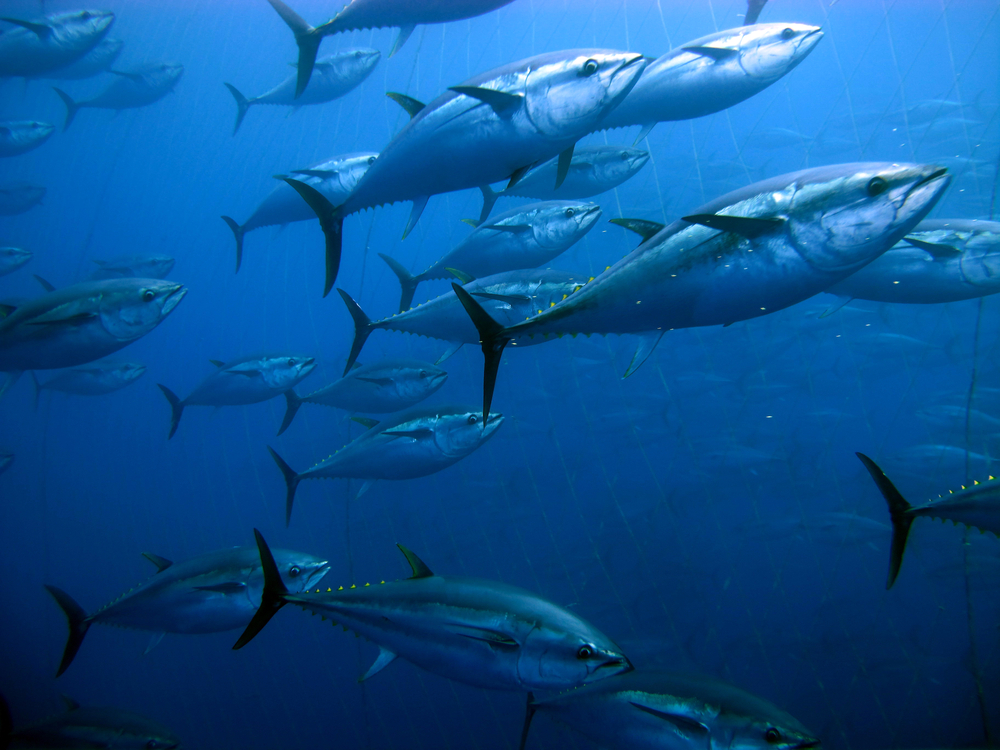
Just like the Mediterranean swordfish and the dusky grouper, the bluefin tuna was once one of the most common fish in the Mediterranean, but due to overfishing, it has been placed on the endangered species list.
These massive creatures have actually gone completely extinct in the Black Sea – so conservation efforts are in full swing to save this species from disappearing entirely.
The bluefin tuna is known for its incredible size and has been a beloved food source for humans and dolphins alike for centuries. Needless to say, if we want to continue to enjoy this rare fish, we’ll need to avoid it for the foreseeable future so that their numbers can once again flourish.

